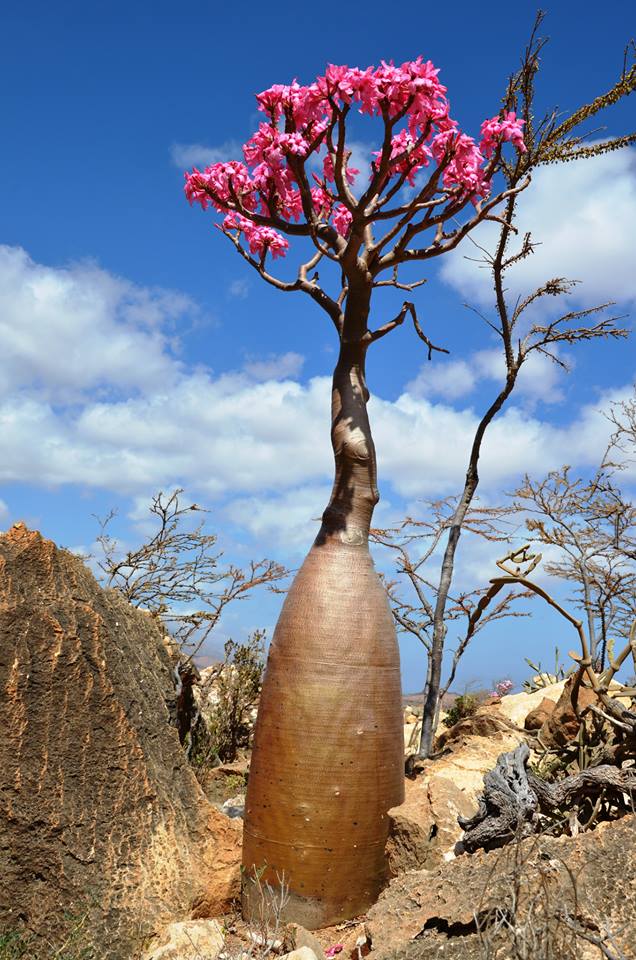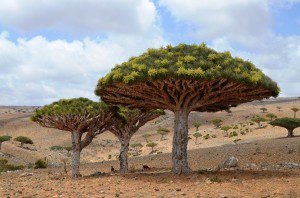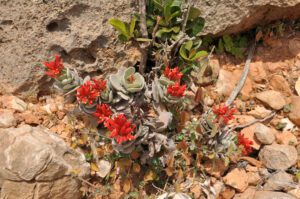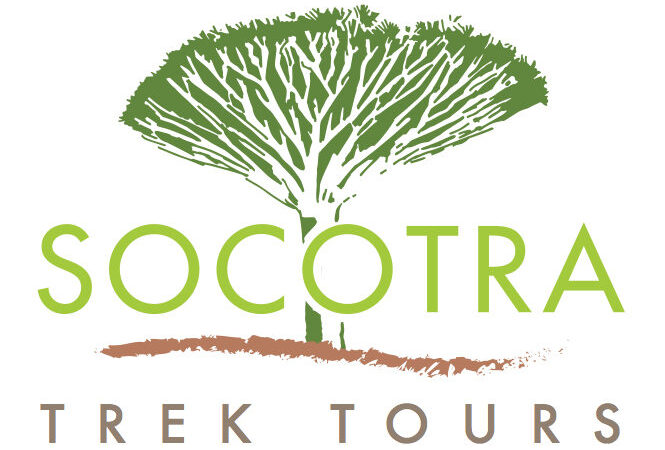
Socotra archipelago hosts a most unique flora, with a high level of endemism, to the point it is often referred to as ‘The Galapagos of the Indian Ocean.
The Islands were renowned since the antiquity for the trade of the resins of three very important plants: Aloe, Dragon’s Blood (Dracaena cinnabari) and Frankincense (Boswellia spp.).

Socotra has been preserved by United Nation Development Program, and has been declared a WWF global 200 Ecoregion, a plant life international Center of plant Diversity, included in The Horn of Africa Biodiversity Hotspot zone. All these added to designation of UNESCO Word Heritage Site and UNESCO man and Biosphere Reserve.
There are three species among the most appealing to many people as Dracaena cinnabari, the Dragoon’s blood tree, Adenium socotranum, the unique desert rose as pictured opposite, but Socotra archipelago has also some remarkable beautiful smaller plants including succulent such as Kalanchoe farinacea, Caralluma socotrana, the Persian carpet flowers Edithcolea grandis, five endemic species of Aloe, and many more.

We want to draw your attention here, if you are interested in botanic, let us know in order to book for you an English speaking guide who has knowledge about plants and where to find them.
The use of Dragon’s Blood Tree: the resin the most major export from the island a part spice trade of the region. It was used as varnish and dye as incense and body oil. Dragon’s blood was also in demand for numerous medicinal purposes, including as coagulant, a fever reducer and to treat ulcers, diarrhea, and dysentery and skin condition. It is still used today as medicinal purpose and also used as decoration Socotri handcraft.
You can refer to this book for botanic detailed information:
Ethnoflora of the Socotra Archipelago written by Anthony Miller and Miranda Morris (2004).
